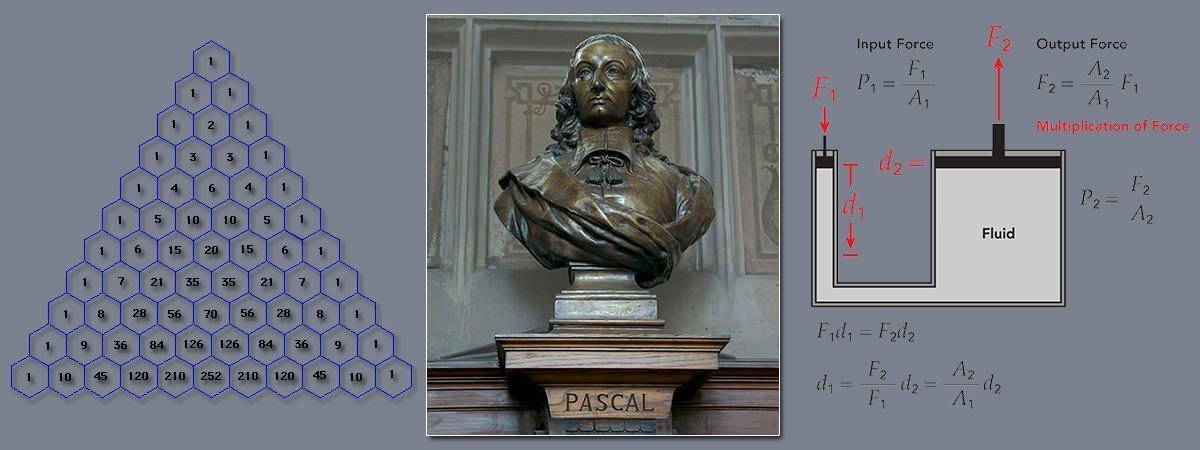Blaise Pascal (1623 – 1662) was a French mathematician, scientist, religious philosopher and writer who was an influential contributor to all of these fields. Pascal came up with Pascal’s Theorem at the age of 16 and before he turned 20, he had also invented the world’s first fully functional mechanical calculator. He made important contributions to the field of hydrostatics which include the Pascal’s Law on which the hydraulic press is based; and his experiment which proved that atmospheric pressure decreases with height. He was a pioneer of the modern theory of probability, which is regarded his most influential contribution to mathematics. Blaise Pascal was also an influential writer and his famous works Pensees and Lettres provinciales are considered classics in French prose. Here are the 10 major contributions of Blaise Pascal to religious writing; as well as mathematics and physics, including his inventions and discoveries.
#1 HE CONTRIBUTED PASCAL’S THEOREM TO PROJECTIVE GEOMETRY
Projective Geometry is a branch of geometry dealing with the properties and invariants of geometric figures under projection. At the age of 16, Blaise Pascal produced a short treatise titled Essai pour les coniques (Essay on Conics) in the emerging field of projective geometry. The essay includes what is now known as Pascal’s Theorem. It states that if a hexagon is inscribed in a conic section then the three intersection points of opposite sides lie on a straight line; referred to as the Pascal line. Pascal’s Theorem was his first important mathematical discovery and a breakthrough contribution in the field of projective geometry.
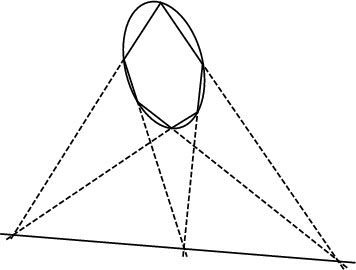
#2 He INVENTED THE WORLD’S FIRST FULLY FUNCTIONAL MECHANICAL CALCULATOR
In 1639, Pascal’s father Étienne was appointed commissioner of taxes in the city of Rouen. To help his father in laborious tax calculations, in 1642, Blaise Pascal constructed a mechanical calculator capable of performing addition and subtraction directly; and multiplication and division through repeated addition or subtraction. Known as Pascal’s calculator or the Pascaline, it was especially successful in the design of its carry mechanism, which adds 1 to 9 on one dial, and when it changes from 9 to 0, carries 1 to the next dial. The Pascaline was world’s first fully functional mechanical calculator, and in 1649 Pascal received a royal patent on the device. A few decades before Pascal, German professor Wilhelm Schickard had made a failed attempt at mechanizing calculation.
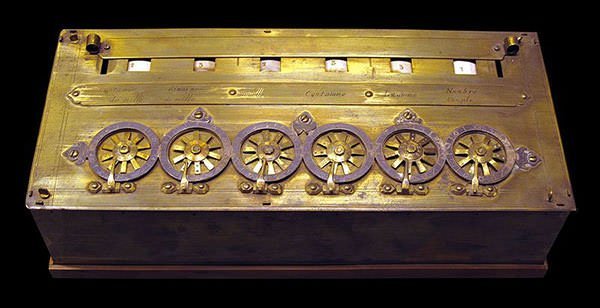
#3 HE DID IMPORTANT WORK CONCERNING ATMOSPHERIC PRESSURE AND VACUUM
In 1643, Italian physicist Evangelista Torricelli filled a glass tube with mercury and inverted it into a column of mercury thus inventing the barometer, which is used to measure atmospheric pressure. Torricelli surmised that the space at the top of the tube was a vacuum. However, scientists of the time were adamant that the existence of vacuum was impossible, as such had been stated by Aristotle. On learning about Torricelli’s experiment, Blaise Pascal devised his own experimental set up to test the results. Pascal published his findings in his 1647 work Experiences nouvelles touchant le vide (“New experiments with the vacuum”). In it he gave detailed rules to describe to what degree various liquids could be supported by air pressure. It also provided reasons why it was indeed a vacuum above the column of liquid in a barometer tube.
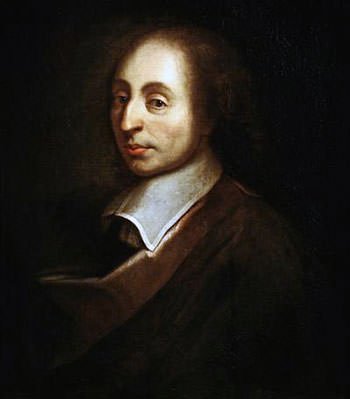
#4 He REDISCOVERED THAT ATMOSPHERIC PRESSURE DECREASES WITH HEIGHT
The decisive experiment, proving that the level of mercury in the tube was due to external atmospheric pressure, was conducted at the Puy-de-Dôme, a large lava dome in central France. However, as Pascal was not well, it was conducted by his brother-in-law Florin Périer. Two identical barometric tubes were used. The first tube remained at a base point in the town where a team monitored its readings; while the other barometer was carried up a mountain. While the reading in the first tube remained constant, mercury level in the other tube decreased with elevation. Thus Pascal rediscovered that atmospheric pressure decreases with height. Though the scientific community accepted his results regarding the inverse variation of atmospheric pressure with altitude, they still insisted that some invisible matter existed above the mercury in the tube. Still, Pascal’s work did advance acceptance of the reality of vacuum.
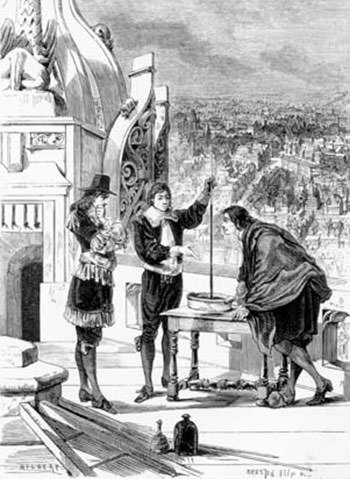
#5 HE DISCOVERED PASCAL’S LAW IN HYDROSTATICS
In 1647, Blaise Pascal discovered what is known as Pascal’s Law or Pascal’s Principle. It states that pressure applied to a confined liquid is transmitted undiminished through the liquid in all directions regardless of the area to which the pressure is applied. Pascal’s Law is one of the most important discoveries in hydrostatics and it is the underlying principle of the hydraulic press which uses hydraulic pressure to multiply force. Hydraulic press is used in many devices including the hydraulic jack and the hydraulic brakes in vehicles. Pascal also invented the syringe as an application of his principle.
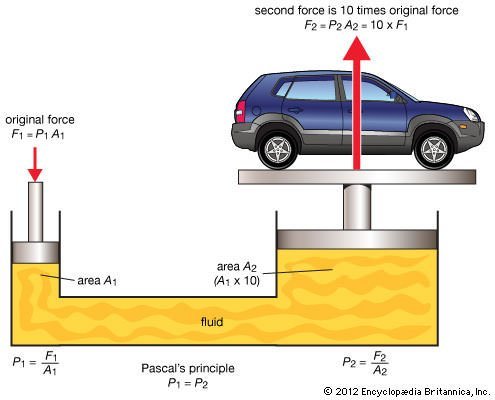
#6 SI UNIT OF PRESSURE IS NAMED AFTER HIM DUE TO HIS CONTRIBUTIONS TO HYDROSTATICS
Two detailed studies by Blaise Pascal, Treatise on the Equilibrium of Liquids and Treatise on the Weight of the Mass of Air, were published after his death and are considered seminal contributions to the sciences of hydraulics and hydrostatics. The former includes his Pascal’s Law and is regarded as the first classic in hydrostatics. Due to Pascal’s experiments with the barometer, his influential principle and his other work in hydrodynamics and hydrostatics, the SI unit of pressure, pascal (symbol: Pa), is named after him.
#7 He WAS ONE OF THE PIONEERS OF THE THEORY OF PROBABILITY
Blaise Pascal is one of the most well known mathematicians. In 1654, he corresponded on the subject of gambling problems with his friend Pierre de Fermat, a lawyer, an amateur mathematician and a noted gambler. Together the two correspondents effectively founded the modern theory of probability, thus strongly influencing the development of not only mathematics but also other fields like economics and social science. Their work into the calculus of probabilities also helped Leibniz’ formulation of calculus. In his unfinished work Pensées, Pascal used a probabilistic argument, Pascal’s Wager, to justify belief in God and a virtuous life. Pascal’s development of probability theory is considered his most influential contribution to mathematics.
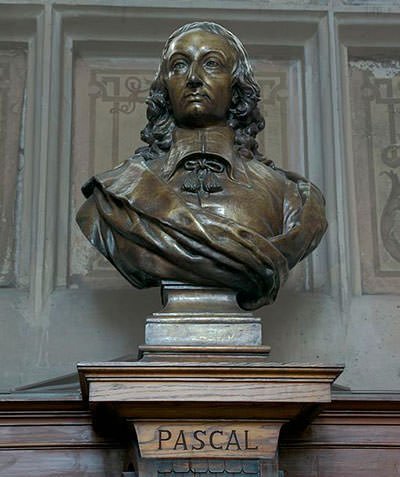
#8 HE POPULARIZED PASCAL’S TRIANGLE IN THE WESTERN WORLD
In his 1653 mathematical work Traité du triangle arithmétique (Treatise on the Arithmetical Triangle), Pascal described a convenient tabular presentation for binomial coefficients, now known as Pascal’s triangle. Indian mathematician Pingala was the first person to present the Pascal’s triangle by 2nd century BC and it was known to other cultures including China. However, Pascal did make it famous in the Western world and hence it bears his name. In 1654, he proved Pascal’s identity, relating the sums of the p-th powers of the first n positive integers for p = 0, 1, 2, …, k. Other contributions of Blaise Pascal to mathematics include his works De l’Esprit géométrique (“Of the Geometrical Spirit”) and De l’Art de persuader (“On the Art of Persuasion”).

#9 HIS WORK PENSEES IS CONSIDERED A LANDMARK IN FRENCH PROSE
Blaise Pascal’s most influential theological work was not completed before his death in 1662 at the age of 39. It was referred to posthumously as the Pensées (“Thoughts”). The Pensees contained a detailed and coherent examination and defense of the Christian faith. It first appeared in print in 1669 and soon became a classic. The Pensees is widely considered to be a masterpiece and a landmark in French prose. Due to his great literary works, the Pensees and Lettres provinciales, Blaise Pascal is regarded as one of the most important authors of the French Classical Period and one of the greatest masters of French prose. He is also considered by many as an early pioneer of existentialism, a philosophical theory centered on analysis of individual existence.
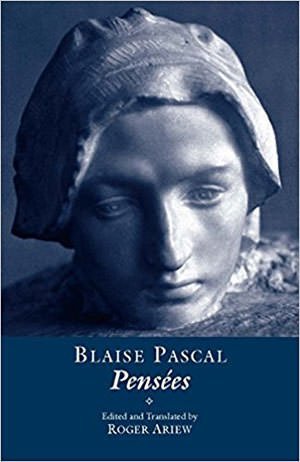
#10 HE WROTE THE INFLUENTIAL WORK PROVINCIAL LETTERS
Blaise Pascal had an intense religious vision in 1654 after which he focused his talents almost exclusively on religious writing. Between January, 1656 and March, 1657, Pascal published a series of eighteen letters to defend the Jansenist community of Port-Royal against the Jesuits, who accused them of heresy. These are now known as Lettres provinciales (Provincial letters). In the Provincial letters, Pascal denounced casuistry as the mere use of complex reasoning to justify moral laxity and all sorts of sins. The reaction to the letters was substantial; and Pascal’s use of wit, humor and mockery in attacking existing institutions made the work extremely popular as a literary masterpiece. Though King Louis XIV ordered the book to be destroyed, it survived and went on to influence the prose of later French writers like Voltaire and Jean-Jacques Rousseau.

